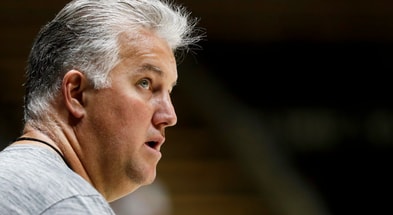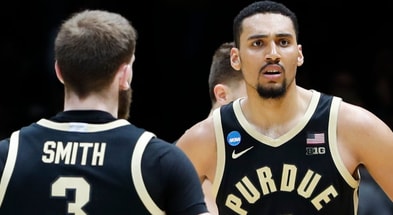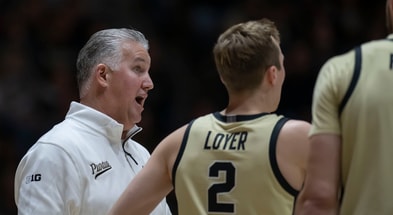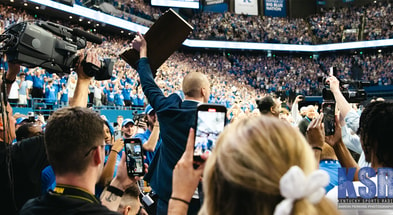Chad Q. Brown continues to cultivate his relationship with Purdue athletics
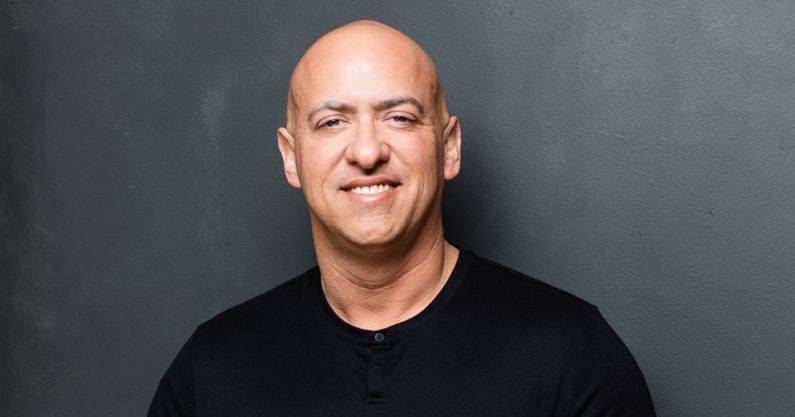
Growing up just 40 miles from Purdue’s campus, Chad Q. Brown has always had a soft spot for Purdue. And when he got his chance to walk-on as a 5-11, 185-pound receiver for coach Jim Colletto, the Lebanon Tiger used it as a springboard for his career in college athletics.
But when Joe Tiller arrived before the 1997 season, Brown’s career turned to the sidelines. He had roles in recruiting and behind-the-scenes work with Tiller before graduating from Purdue in 1998. That transitioned into coaching stops at Washington & Jefferson, Dartmouth, Idaho, and Northern Colorado, where he served as the offensive coordinator for former Boilermaker assistant Scott Downing until 2008, and was on the opposing sidelines when Tiller tied Jack Mollenkopf’s record as the Boilermakers’ winningest football coach.

“I owe a lot to Coach Tiller and the staff that he had,” Brown said. “It helped me to a world of opportunities and to learn more about what college football and college athletics were all about. He pulled me into his office when I needed 18 hours to graduate and asked, “do you want to do this?
“He also reminded me (no uncertain terms) that ‘what you see here stays here even when you leave here.’ I haven’t forgotten that.”
Brown learned from Tiller, who was a master in studying the human condition and what made athletes tick. Deciding that a life in coaching wasn’t for him, Brown chose to take on a consulting role with Dragonfly Technologies before deciding to start his company Profile Behavior.
“I went into the corporate world and learned about assessment and learned many leadership traits,” Brown said. “I knew nobody in coaching was doing assessments, and I knew there was room to help a kid and a coach in their relationship. Those two personalities don’t always jibe, and it became clear that data could be helpful to accelerate the relationship, the chemistry, and even trust between coach and player.”
At for the last 13 years, staring with Purdue men’s basketball being his first client, Brown hasn’t looked back.
The following are excerpts from GoldandBlack.com’s interview with Brown last week for Saturday Simulcast.. It has been edited and organized for clarity.
GoldandBlack.com: Give us your elevator speech on the what Profile Behavior is all about?
Brown: Profile is a behavioral analytic company–think personality profiles for athletics, and we work with not only all sports at Purdue, but the NFL Combine, the Dallas Cowboys and college athletic departments around the country. But a lot of people know of personality behavioral assessments. There’s a lot of them out there. Just through the years, we’ve learned that they can help with the recruiting and transfer portal. That’s our innovative way to give Purdue and our clients insight when they are wired in the fast process.
We use three short, fast assessments that are very powerful. We use software that you can view on your computer, allowing you to walk away while the coaches can refer to it and say, for example, ‘this is how to talk to Fletcher Loyer,’ and ‘this is maybe how not to talk to Fletcher Loyer.’ We have a unique perspective on corporate and sports together.
GoldandBlack.com: Take us through the history of your relationship with Matt Painter.
Brown: People think we have known each other forever, but Matt and I didn’t get to know each other until about 2010. A simple story about how we got started is this. I met Matt at a card game with some friends, and he was opening up a little bit to me and we were lamenting that he had a couple of guys who just didn’t follow the rules. The specific story is this: They have a sign-in sheet for breakfast, and the guys were not telling the truth. It’s not the whole thing, but that’s one of the little things that Matt has looked for in guys, just to do things the right way. And we can quantify that and talk about it, but little things like that are where he’s focused, to just find guys that are chasing winning, chasing championships, obsess about the craft, the craft of basketball, and just guys that do things right? And that’s been a big thing for Matt. And that desire came out the first time I met him.
GoldandBlack.com: How are Tiller and Painter similar?
Brown: Neither wavered in their belief in talent evaluation and what is fit for them. They don’t blink. Matt will tell you that early in his career, he did (blink) because he got pressure from the optics of college basketball. Back then, he might have recruited somebody because Michigan State, for example, was recruiting, or he might not have recruited somebody because, for instance, Illinois wasn’t. But look at what Matt Painter has done since. He’s one with less (or prospects that were perceived to be less) for years. He is an elite evaluator.
I was recently sitting with an NBA executive who shared a story about being with Painter at an event featuring top high school talent. The executive showed Painter the list of the top 50 players in the country and asked Painter who he was recruiting from that list. Painter pointed to the guys who weren’t at the top-50 level. Purdue fans may go ‘I don’t like that.’ But he continues to win with the right guy. We can tell stories for days on this topic.
Top 10
- 1Breaking
Landmark Approval
House vs. NCAA Settlement
- 2New
EA Sports CFB 26
Schools paid based on usage
- 3
Manning Passing Academy
College QB attendees announced
- 4
Keelon Russell
Mother releases statement
- 5Trending
MLB Mock Draft
New No. 1, big shakeup
Get the On3 Top 10 to your inbox every morning
By clicking "Subscribe to Newsletter", I agree to On3's Privacy Notice, Terms, and use of my personal information described therein.
Tiller did it too by knowing who he wanted. He flipped his roster in the early days with junior college players (especially at receiver, when Purdue needed help). Tiller also believed that if his guys didn’t do what they were supposed to do, he would stand up and say, You’re no longer allowed to be here. He would make it a point to do it in front of the whole team. Guys would be escorted out and they would pick up their stuff from the equipment room, and be gone.
GoldandBlack.com: What do you see in Barry Odom?
Brown: I’m getting to know Barry, but I can tell everybody on the team is listening. That’s happening here. There’s little Joe Tiller in Barry Odom. So it’s a little premature, but they’re doing some cool stuff over there.
GoldandBlack.com: Is it a struggle to get coaches who think they have the data in their head and don’t need assessments?
Brown: It is the number one reason coaches don’t use us. They think, and sometimes rightfully so, ‘I’m good at my job; why do I need your system?’ In this fast-paced portal world, they sometimes don’t want to take time to slow down. I get that.
GoldandBlack.com: How do you find the time to give assessments to prospects, especially in football, when the portal is akin to speed dating?
Brown: It’s all about how you present it. We certainly give them the option, but we frame it as “Would you mind taking a leadership profile that will help us coach you better when you arrive at school?” As it turns out, the parents like it because it helps them know more about their child.
GoldandBlack.com: Purdue athletics raised about $20 million to help improve athletes’ experience and to, in part, be able to make its product available to all of its teams. How is this reflective of the culture?
Brown: Everybody heard the comment this winter from basketball analyst Jalen Rose, who said Matt Painter had better change his ways and be involved in the transfer portal. It’s funny to me when people say dumb things like that, because Purdue is in an unbelievable spot when it comes to support. It is doing it so much better than other people.
However, a significant portion of what I learned is that donors who are C-suite-level executives, individuals in business who understand data-driven hiring and data-driven talent development, have decided to get behind Purdue.
Our president, Mung Chiang, is unbelievable. He is at the forefront of athletics. And I’ll say this: I work with many university clients from around the country. I was just at the Big Ten meetings in Los Angeles. Other schools don’t have the same level of support that Purdue has, simply because they have a big name.
GoldandBlack.com: What are other sports at Purdue who you are seeing positive results?
Brown: (Wrestling’s) Tony Ersland has done a great job and has used our tools to help him build his culture in one of the toughest leagues in college sports. (Softball’s) Maggie Frezotti conducted a leadership exercise between her pitchers and catchers, which helped them this year, and I was thrilled to see them do so well in the Big Ten Tournament. (Women’s Basketball) Katie (Gearlds) used it to attract some good kids to the portal, and she will be the first to admit that her program needs improvement, but she is all in.
GoldandBlack.com: You travel the country, and it is unprecedented times for college sports. Are you optimistic about the future and what the House Settlement might bring. What is your message?
Brown: Everybody, get off your high horse. Let these kids make money. But we need better guardrails. And that’s happening right now. So everybody should be excited, because it’s going to improve the quality of these teams. The sad part is that some people are going to get left behind, and if schools drag their feet, you know they will be left behind. But the people who choose to be proactive, like Purdue, it’s exciting because it’s going to have fans love their weekends, love the NCAA Tournament, and love bowl season, because you’re competitive.
Here is the complete interview with Chad Brown conducted May 22.
More: The 3-2-1






